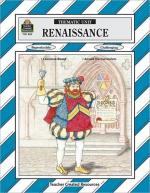|
This section contains 3,804 words (approx. 13 pages at 300 words per page) |

|
Universal Emperor. The monarchy, in which one man had absolute authority received from God, was the accepted type of government during the Middle Ages. The ideal was the universal empire, in which all the peoples and kings of the world were subject to one emperor, following the example of the Roman Empire. It was based on the concept that all of humanity properly should have just one ruler. The divine sovereignty of one God over the world and one pope over the Church were models of the authority of the universal emperor.
Holy Roman Empire. The reality of government in Europe was far different, but there was an institution called the Holy Roman Empire, whose emperors occasionally voiced claim to authority over all of Christendom as God's viceroy on Earth. What power the emperor had was in fact limited...
|
This section contains 3,804 words (approx. 13 pages at 300 words per page) |

|




